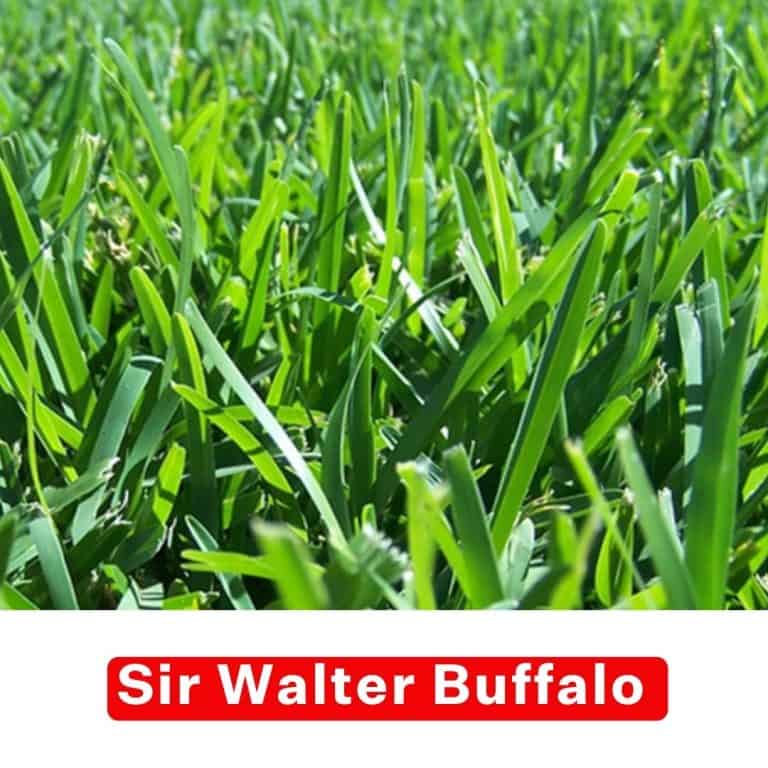288 Carabooda Road, Carabooda, WA 6033 | Call (08) 94075288


Sir Walter Buffalo is probably the best-known brand of soft buffalo lawn in Australia. It is shade-tolerant with a horizontal growth pattern. Just like Matilda Soft Buffalo, it has a vigorous horizontal growth pattern providing dense coverage, which assists with inhibiting weeds.
Low Maintenance Buffalo Grass Perth
Sir Walter Buffalo Grass is low maintenance due to its non-invasive horizontal growth pattern and shallow root system. Buffalo grasses perform well if they get 3 hours of filtered sunlight daily, as their wide leaf captures the sunlight.
Perfect Buffalo Lawn for Australian Conditions
Sir Walter Buffalo is the perfect lawn for Australia’s harsh conditions. It is trusted by many Perth Lawn lovers due to its ability to grow in the shade or full sun.
Great For Families
Sir Walter Buffalo is suitable for your family thanks to its soft leaves providing a cushioned safe environment for Children and Pets. This weed-resistant, rich green grass is one of the most popular soft-leaf buffalo varieties.
Thinking About Getting Buffalo Grass Perth? Think Carabooda Lawn!
Carabooda Lawn has been supplying roll on lawn in Perth for over 35 years. We are trusted by residential customers, landscapers, trade, commercial, councils and Bunnings. If you are considering Buffalo Grass, then contact us today.
Sir Walter Buffalo turf has a broad leaf, growing horizontally, forming a dense leaf coverage. It is a very popular choice as it copes well in part-shaded areas as well as being low maintenance, due to having a shallow root system, it is considered non-invasive and is easily removed. It is important to have good water retention in your soil’s top profile, so the Sir Walter Buffalo can easily access water and nutrients and perform really well in its’ environment
Sir Walter Buffalo is low maintenance and non invasive due to its’ shallow root system. It is the best turf to use for shaded areas. However, all turf varieties require 3-4 hours of filtered sunlight daily to grow well. Buffalo turf looks beautiful and is very cushioning to walk on. It is used in childrens play areas at schools and day care centres.
The best time to install Sir Walter Buffalo turf is when the ground temperature is warm which assists the turf to establish a root system quickly. So here in Perth, WA Spring, Summer or Autumn is best, although it is perfectly fine to install Sir Walter Buffalo during Winter and make use of the free rainfall, if you don’t mind waiting a little longer for the turf to establish.
During the hotter months Sir Walter Buffalo would establish in three weeks, and would be ready for its’ first light mow. The establishment period varies, obviously being quicker when the ground temperature is warmer combined with adequate water. It is important to initially water three times daily [we recommend 6am, 10am and 2pm] applying 10ml per water. Then gradually reducing watering applications as the turf begins to establish. Having good soil that retains water is key to the performance of any lawn, which you can do by incorporating compost, manures, clay, blood and bone, soil wetters. A good reticulation system where the water sprays cross each other so no areas miss out on water is also very important!
To establish Sir Walter Buffalo, it is recommended to apply 10ml three times per day (preferably 6am, 10am and 2pm). It is not recommended to water the turf late when there is no evaporation, so the last water should be done at the hottest time of the day! In WA, it is also recommended to use Soil Wetters as part of your watering regime during the warmer months to assist with water absorption and retention. In Winter, if there is frost, it is recommended to water the turf in the morning to prevent leaf burn, but here in WA, frost is minimal and there is generally sufficient rainfall to keep the plant happy during its’ dormancy.
Sir Walter Buffalo Grass is trusted for its ability to grow in part-shade or full sun. All Buffalo grasses require at least 4 hours of filtered sunlight daily to to stay lush and healthy.
Yes. It copes well with Australia’s harsh weather conditions with extreme heat and wind. It benefits from soil wetting agent, organic products that create humus and regular watering.
Yes, Sir Walter Buffalo is great for families. It has soft leaves that provide a comfortable, cushioned and safe environment for children and pets. Dogs urine burns the turf, so water should be applied to these areas to dilute the acidity.